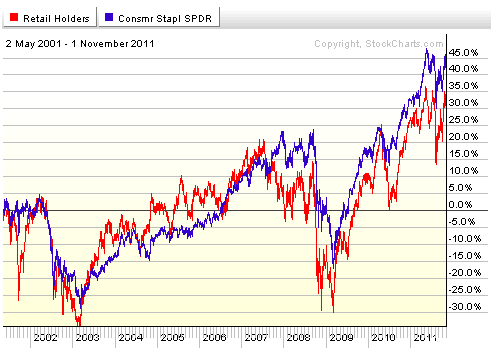Everything you’ve heard about investing from the mainstream media, your mutual fund advisor and your tax accountant is a lie.
Hear me out.
Investors have been led to believe by the financial industry that the entire point of portfolio diversification is to mitigate downside risk. Yet, when the market experiences the inevitable bear market every sector pushes significantly lower – and your diversified portfolio suffers as a result.
The idea of diversifying your portfolio began with Harry Markowitz’s article in 1952 on portfolio diversification. And since that time, diversification has been the cornerstone of Modern Portfolio Theory and portfolio risk management.
Literally – the entire "retail" sector of investing, including all mutual funds, all 401(k) managers, index investing – it all grows out of that original diversification idea from Markowitz.
We have been taught to spread our investments across a healthy range of stocks across different industries to reduce our downside risk exposure.
The logic behind this approach to risk management (a form of investment portfolio "insurance") goes something like this: if, for example, the retail sector falters, an entirely different industry such as consumer staples may be immune to whatever plagued the retail sector. If, for example, retail companies’ stocks plunge because a recession hits, broke consumers are not going to stop buying more defensive consumer staples like toothpaste and laundry detergent – so consumer staples stocks are less likely to suffer.
But, as you can plainly see from the chart below, when a bear market occurs like in 2002 and again in 2008, it doesn’t matter what sector you choose. While I have chosen retail and consumer staples for my example, all sectors fail during significant downturns, and fail miserably.

When Harry Markowitz came up with the Modern Portfolio theory in 1952 he wasn’t privy to the ultimate way to truly protect your portfolio.
The best way to mitigate and insure against downside risk literally did not exist in 1952. So while Harry did his best given the tools available at the time, his recommendations for diversification simply can’t provide real insurance.
It was roughly twenty-one years AFTER Harry Markowitz introduced his theory that real stock market insurance was brought to market. And even though it’s been another 40 years since that advent, most investors STILL don’t realize that the single best and easiest method of portfolio insurance even exists.
If you haven’t guessed yet, I’m talking about options.
And you probably didn’t realize it, but options were originally created to act as a form of insurance. That’s because options really are just contracts to cover your stock holdings under very specific circumstances.
While options were created to help investors mitigate risk, most investors are using options for speculation.
Going back to our example, fortunately, through the use of options you can protect both sectors, retail and consumer staples.
Let me explain.
Let us assume that Retail Holders Trust (RTH) from our earlier example trades at $110 and you own 100 shares of RTH. Recently, the overall market and RTH pushed into an intermediate-term overbought state. Let’s suppose that you believe the market will witness a decline over the next few months. A decline that you suspect could exceed 10 percent and would likely affect the retail sector similarly.
In order to protect (hedge) your investment, you may want to buy 1 April put contract at the 100 strike on RTH. This is the equivalent of 100 shares of RTH stock (each option contract is equal to 100 shares of stock). So, you are now protected until roughly March, not April (due to time decay, but I will save that for another discussion).
Since the put option at the 100 strike is out-of-the-money, you will be able to buy an RTH option for $1.50 a contract. So for the 1 put contract you would pay $150 (1 contract X 150). You are now hedged, or insured against losses below $100 for a cost of only $150 on a portfolio that has a value of $11,000. Easy right?
The extra $150 spent on purchasing the RTH put is the cost of protection, or insurance. Thus the cost to insure your $11,000 investment is $150, or only 1.3 percent.
But this is more than just an insurance policy, which is typically just cash out the door.
By using options to insure your portfolio, if the price of RTH goes up to say $120, you will have a profit of $8500 ($10,000 increase in portfolio less $1500 for the cost of the options insurance). Of course the profit would be the full $10,000 if you decided not to hedge your investment.
However, if the price of RTH falls to say $90, or roughly by 17 percent, since you have protected your RTH investment down to $100 by purchasing a put option at the 100 strike price, your loss will be limited to $1,000. Had you decided not to protect your portfolio, your loss would be $2,000. The small $150 cost of protection doesn’t look so bad now does it?
Of course, you could limit your losses to only 5%, or even less, if you wish. The wonderful aspect about options is that you can create your own risk profile.
I hope that you picked up a few tips on how to protect your portfolio. You might be a trader or a buy and hold investor, either way we all want to protect our capital and using options are one of the most effective ways.
As always these are just guidelines, and obviously personal preferences can vary. Just remember, it is all about finding the best insurance policy for your own situation.
Andrew Crowder
Editor and Chief Options Strategist
Options Advantage
The Strike Price
Stowe, Vermont
 Facebook
Facebook
 Twitter
Twitter